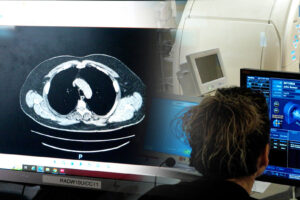Measuring mAbs with magnetic resonance can help regulatory testing
Published April 24, 2015 in BioPharma Reporter.
US researchers have discovered the most precise method yet for measuring the structure of monoclonal antibodies. The technique gives manufacturers and regulators a way of assessing and comparing the performance and quality of mAbs using nuclear magnetic resonance (NMR).
The structure of mAbs is an important factor in deciding on the safety and efficacy of these biomolecules as medicines. “This measurement technique provides one robust means for a company to meet regulatory requirements for the characterization of the higher order structure of a protein drug product. This can be useful in pre-clinical and clinical setting,” said Robert Brinson at the Institute for Bioscience and Biotechnology Research (IBBR) in Rockville, Maryland.
The IBBR is a joint institute of the National Institute of Standards and Technology and the University of Maryland. A paper from the IBBR team is the first demonstration of detailed mapping using 2D NMR on therapeutic mAbs without sophisticated and expensive isotopic labelling (Analytical Chemistry, DOI: 10.1021/ac504804m).
“In a QC environment, NMR could potentially be used to evaluate multiple lots through statistical comparability methods. If a lot arises that is outside of specifications, NMR would allow for a detailed analysis of what happened to the structure,” Brinson notes.
MAbs can be extremely specific therapeutic agents, but they must fold into their correct 3-D structure. Misfolding can leave them ineffective for treatment or cause a dangerous or fatal immune reaction.
The team defied conventional wisdom, which holds that NMR measurements begin to fail for molecules larger than 30,000 Daltons, without using sophisticated isotope labelling techniques; the mAb they looked at was 150,000 Daltons, using an ultra-high field 900 MHz spectrometer.
This gave a unique 2-D spectral map, or spectral fingerprint. “The data is formatted as a contour map and gives precise positions of protons attached to carbons at atomic resolution,” said Brinson.
Specifically, what they measure is signals from each of the methyl groups in the protein. These groups are dispersed throughout the protein and therefore reveal how well the protein is folded.
NMR is a method similar to magnetic resonance imaging (MRI) used in clinical settings. There are no other techniques that provide the high resolution analysis that NMR allows and can be practically applied to industrial discovery or development measurements, says Brinson. “While NMR has traditionally needed expert operators to collect the data, we have endeavoured to package the data in a way that the non-expert user can implement them. This packaging involved the utilization of rapid data collection techniques to reduce the experimental time down to approximately 30 minutes,” he explained.
“The method should find general applicability in the biopharmaceutical industry for lot-to-lot assessment and for comparability between innovator and biosimilar products.”
Brinson adds: “Most other techniques afford low to moderate resolution that measures large structural features that can actually miss small structural differences. There are cases of mutant proteins exhibiting a highly similar analytical signature as the reference drug product but then fail a biological assay that looks at its potency.”
He cautioned that the NMR method should be considered as complementary to other analytical techniques, since these examine other critical properties.
To make their method applicable to NMR platforms commonly found in industry, the researchers cleaved an IgG antibody into its Fc and Fab fragments and applied their NMR technique using a lower field of 600 MHz. They confirmed that no important structural information was lost from the full length mAb.



